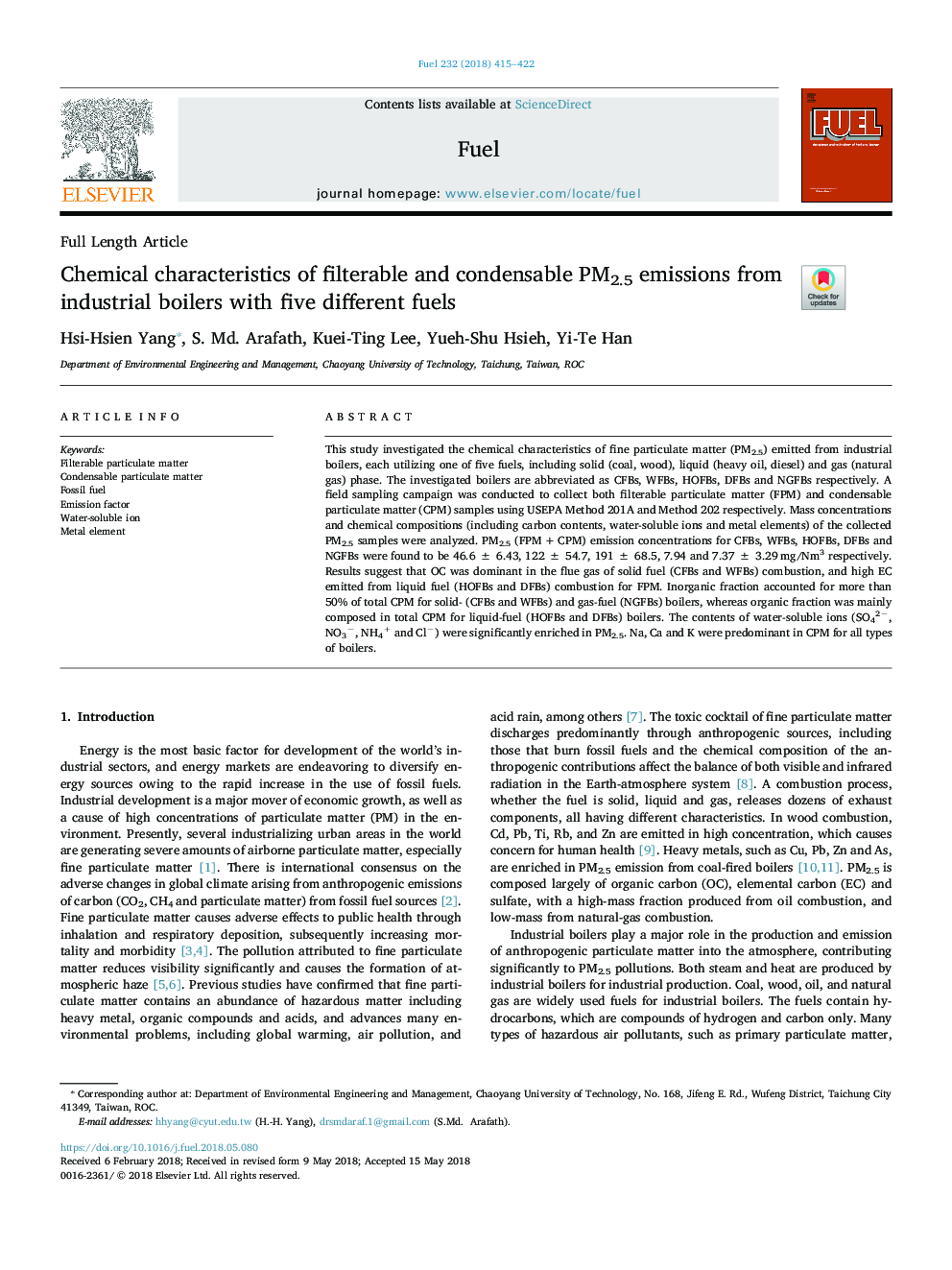| کد مقاله | کد نشریه | سال انتشار | مقاله انگلیسی | نسخه تمام متن |
|---|---|---|---|---|
| 6630418 | 1424932 | 2018 | 8 صفحه PDF | دانلود رایگان |
عنوان انگلیسی مقاله ISI
Chemical characteristics of filterable and condensable PM2.5 emissions from industrial boilers with five different fuels
دانلود مقاله + سفارش ترجمه
دانلود مقاله ISI انگلیسی
رایگان برای ایرانیان
کلمات کلیدی
موضوعات مرتبط
مهندسی و علوم پایه
مهندسی شیمی
مهندسی شیمی (عمومی)
پیش نمایش صفحه اول مقاله

چکیده انگلیسی
This study investigated the chemical characteristics of fine particulate matter (PM2.5) emitted from industrial boilers, each utilizing one of five fuels, including solid (coal, wood), liquid (heavy oil, diesel) and gas (natural gas) phase. The investigated boilers are abbreviated as CFBs, WFBs, HOFBs, DFBs and NGFBs respectively. A field sampling campaign was conducted to collect both filterable particulate matter (FPM) and condensable particulate matter (CPM) samples using USEPA Method 201A and Method 202 respectively. Mass concentrations and chemical compositions (including carbon contents, water-soluble ions and metal elements) of the collected PM2.5 samples were analyzed. PM2.5 (FPMâ¯+â¯CPM) emission concentrations for CFBs, WFBs, HOFBs, DFBs and NGFBs were found to be 46.6â¯Â±â¯6.43, 122â¯Â±â¯54.7, 191â¯Â±â¯68.5, 7.94 and 7.37â¯Â±â¯3.29â¯mg/Nm3 respectively. Results suggest that OC was dominant in the flue gas of solid fuel (CFBs and WFBs) combustion, and high EC emitted from liquid fuel (HOFBs and DFBs) combustion for FPM. Inorganic fraction accounted for more than 50% of total CPM for solid- (CFBs and WFBs) and gas-fuel (NGFBs) boilers, whereas organic fraction was mainly composed in total CPM for liquid-fuel (HOFBs and DFBs) boilers. The contents of water-soluble ions (SO42â, NO3â, NH4+ and Clâ) were significantly enriched in PM2.5. Na, Ca and K were predominant in CPM for all types of boilers.
ناشر
Database: Elsevier - ScienceDirect (ساینس دایرکت)
Journal: Fuel - Volume 232, 15 November 2018, Pages 415-422
Journal: Fuel - Volume 232, 15 November 2018, Pages 415-422
نویسندگان
Hsi-Hsien Yang, S. Md. Arafath, Kuei-Ting Lee, Yueh-Shu Hsieh, Yi-Te Han,